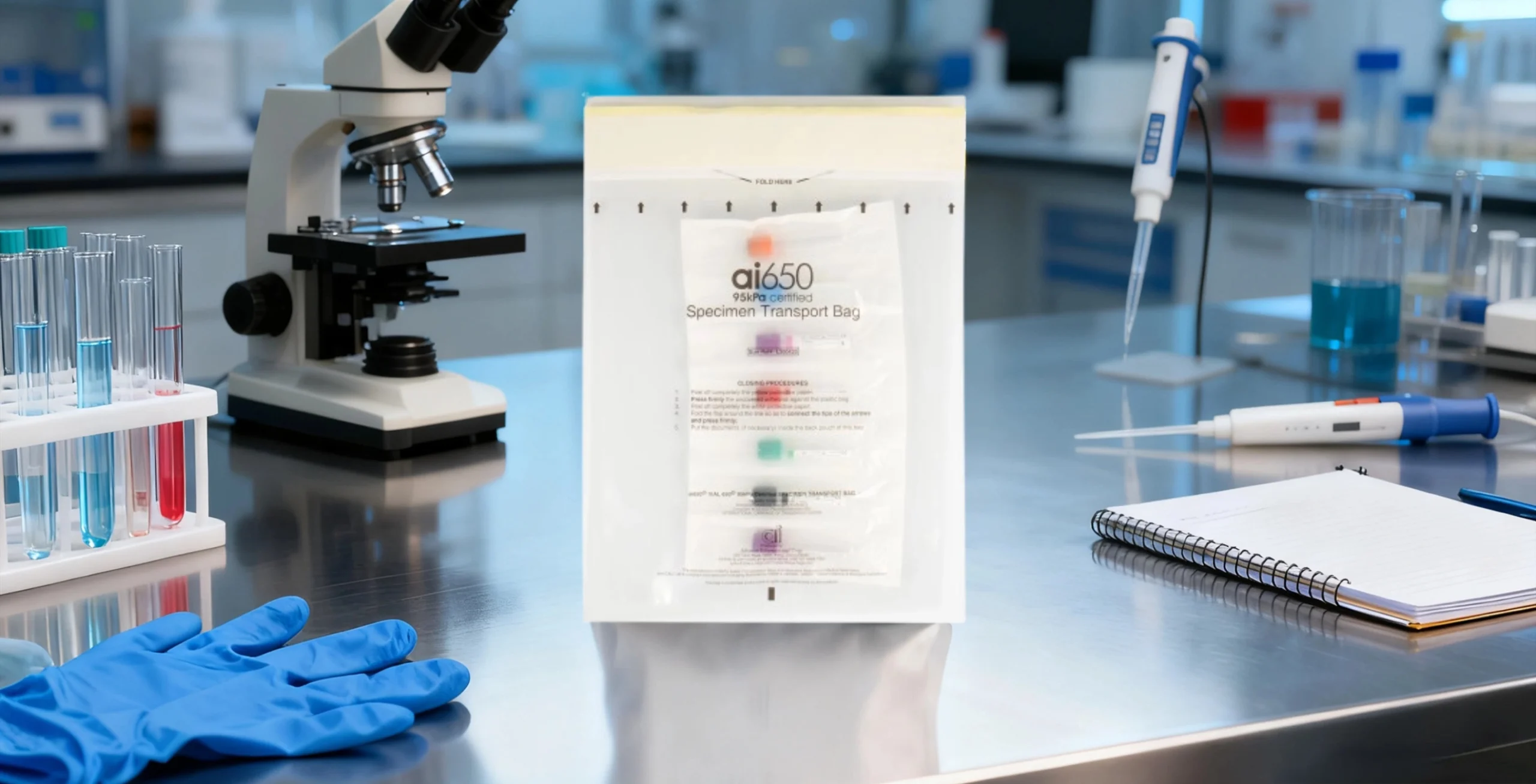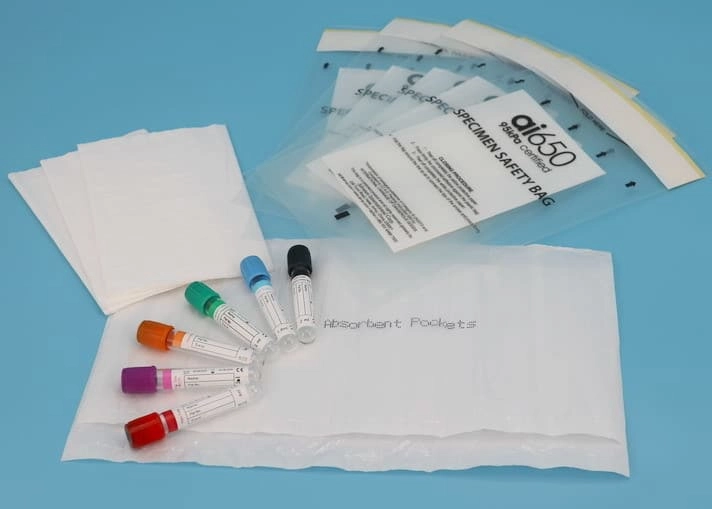Choosing the Right Absorbent Material for Safe Specimen Transport
Release time: 2025-05-20

Ensuring the safe and compliant transportation of biological specimens is paramount in healthcare and research. One crucial, yet often overlooked, element in this process is the absorbent material used within the packaging. The right absorbent not only protects the specimen’s integrity but also safeguards personnel and the environment from potential leaks and spills.
This blog post will delve into the characteristics of suitable absorbent materials for specimen transport and highlight how they complement the features of AI 650 specimen bags, a popular choice for secure transport.
Why is Absorbent Material Necessary?
Regulations like the IATA Packing Instruction 650 mandate the use of absorbent material for the transport of diagnostic specimens and other biological substances. This requirement serves several critical purposes:
- Containment: In the event of a primary container leakage, the absorbent material soaks up the liquid, preventing it from spreading and potentially contaminating the outer packaging or surrounding environment.
- Safety: By containing spills, the risk of exposure to potentially infectious or hazardous materials for handlers and transporters is significantly reduced.
- Compliance: Adhering to transport regulations is essential to avoid penalties and ensure the smooth transit of specimens.
Key Characteristics of Suitable Absorbent Materials:
Not all materials are created equal when it comes to absorbing liquids during specimen transport. Ideal absorbents possess the following characteristics:
- High Absorbency Capacity: The material should be capable of absorbing a significant volume of liquid relative to its weight. This minimizes the amount of absorbent needed and ensures effective containment even with substantial leaks.
- Inertness: The absorbent should not react with the specimen or the primary container material. Chemical interactions could compromise the specimen’s integrity or the packaging’s stability.
- Non-Particulating: Ideally, the material should not shed fibers or particles that could contaminate the specimen or interfere with subsequent analysis.
- Ease of Use: The absorbent should be easy to handle and place within the packaging. Pre-cut sheets or pouches can simplify the packing process.
- Cost-Effectiveness: While performance is paramount, the cost of the absorbent material is also a consideration for routine specimen transport.
Commonly Used Absorbent Materials:
Several materials are commonly employed as absorbents in specimen transport packaging:
- Cellulose-based materials (e.g., absorbent pads, paper towels): These are readily available and cost-effective. However, their absorbency capacity can vary, and they may not be suitable for large volumes of liquid.
- Super Absorbent Polymers (SAPs): These synthetic polymers can absorb many times their weight in liquid and are highly effective for containing significant leaks. They are often found in specialized absorbent pouches or incorporated into other materials.
- Vermiculite: This mineral material is lightweight and has good absorbent properties. It is often used for packing and cushioning as well as absorption.
Specialized Absorbent Sheets/Pouches: Many manufacturers offer pre-formed absorbent sheets or pouches specifically designed for specimen transport. These often combine different materials for optimal absorbency and containment.
The Role of AI 650 Specimen Bags:
AI 650 specimen bags are designed with compliance and safety in mind, making them an excellent choice for transporting diagnostic specimens. These bags typically feature:
- Leak-proof construction: Often with a secondary containment pouch to further prevent leaks.
- Biohazard symbol: Clearly indicating the nature of the contents.
- Document pouch: For securely holding necessary paperwork.
When used in conjunction with a suitable absorbent material, AI 650 specimen bags provide a robust and compliant packaging solution. The absorbent material acts as a critical secondary layer of protection within the leak-proof bag.
Choosing the Right Absorbent for Your Needs:
The best absorbent material for your specimen transport will depend on several factors, including:
The type and volume of specimen being transported.
The size and type of primary container.
Specific regulatory requirements.
Budget considerations.
It’s crucial to select an absorbent material with sufficient capacity to handle the potential volume of a leak from the primary container. Always refer to the packaging instructions and relevant transport regulations for guidance.
Selecting the appropriate absorbent material is an essential step in ensuring the safe and compliant transport of biological specimens. By understanding the key characteristics of effective absorbents and how they complement high-quality packaging like AI 650 specimen bags, healthcare professionals and researchers can minimize risks, protect specimen integrity, and adhere to regulatory standards. Investing in the right absorbent is an investment in safety and responsible handling of valuable biological materials.


